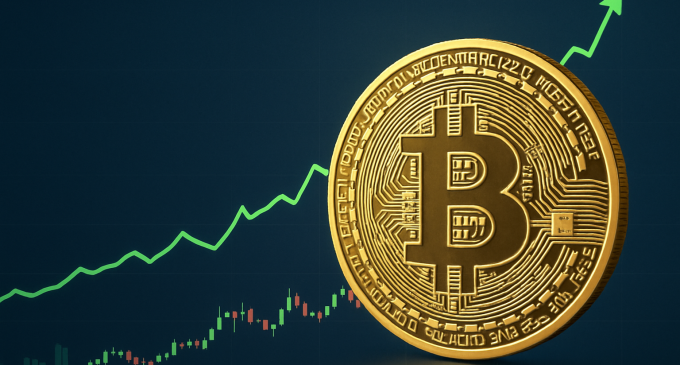
Introduction
Bitcoin has once again captured global financial headlines by breaking its all-time high, reaching a peak of $123,120 on July 16, 2025. This historic milestone comes after a sustained rally that began in early April when Bitcoin was hovering around $74,500. The surge represents a gain of over 65 percent in just three months, underpinned by institutional buying, record ETF inflows, regulatory clarity, and strong retail accumulation.
This rise is not a speculative blip but a multifaceted rally driven by robust fundamental support, suggesting that Bitcoin is entering a new era of legitimacy within the financial system. It is also reshaping how traditional finance interacts with the cryptocurrency world.
Key Drivers Of Bitcoin’s Rally
1. Record-Breaking Inflows into Spot Bitcoin ETFs
Perhaps the most significant catalyst for this bull run has been the unprecedented inflow into U.S. spot Bitcoin exchange-traded funds (ETFs). The IBIT ETF from BlackRock, in particular, has surpassed 700,000 BTC in assets under management, making it one of the largest ETF products by volume globally. Across all Bitcoin ETFs, capital inflows in the second week of July 2025 alone totaled $3.13 billion.
This massive demand stands in sharp contrast to previous ETF launches, such as the gold ETF in the United States, which only attracted $309 million in its first year. These inflows suggest strong and growing institutional appetite for Bitcoin exposure via regulated, easily accessible investment vehicles.
2. Decreased Selling Pressure from Long-Term Holders
On-chain analytics show a significant decline in selling pressure from long-term holders of Bitcoin. The supply held by wallets inactive for over 155 days remains stable or rising, indicating that seasoned investors are choosing to hold rather than take profits at these high levels. This behavior is typically associated with long-term confidence in the asset’s future price.
3. Corporate Accumulation and Treasury Strategies
Major publicly traded firms are once again accumulating Bitcoin for their corporate treasuries. MicroStrategy, now rebranded as Strategy, added another 4,225 BTC worth $472.5 million, bringing its total holdings to over 601,550 BTC. Japanese firm Metaplanet has followed a similar strategy, allocating portions of its balance sheet to Bitcoin as a store of value.
These moves signal that Bitcoin is becoming a strategic reserve asset among institutions seeking to hedge against fiat currency devaluation and diversify their financial holdings.
4. Technical Momentum and Short Squeeze Phenomenon
In addition to fundamental factors, technical momentum has played a major role in pushing prices higher. Analysts have noted that Bitcoin has broken through significant resistance levels at $109,000 and $112,000, with new targets in the $125,000 to $136,000 range.
Moreover, this rally has seen the unwinding of a substantial number of short positions. Since January 2025, over 2.1 million BTC in short trades have been liquidated, creating a short squeeze effect that further amplified price movements.
5. Retail Demand Continues to Outpace Supply
Smaller investors, those holding less than 100 BTC, continue to accumulate coins at a rate of 19,300 BTC per month. This number far exceeds the current post-halving monthly mining supply of around 13,400 BTC. The imbalance between new supply and retail demand suggests a structural deficit that will continue to put upward pressure on prices.
Altcoins Ride The Wave As Ethereum, Solana, And Others Rally
While Bitcoin has dominated headlines, the rest of the cryptocurrency market has not been left behind. The recent rally has lifted altcoins significantly, with many recording double-digit weekly gains.
Ethereum Breaks Above $3,000
Ethereum (ETH) has reclaimed the $3,000 mark for the first time since February. Its rise is being fueled by renewed interest in decentralized finance (DeFi), where the total value locked (TVL) has risen by more than 45 percent to over $126 billion since April. Institutional interest in ETH staking services is also on the rise, further legitimizing its role as a yield-bearing crypto asset.
Solana Maintains Momentum Above $160
Solana (SOL) has held steady above $160 with a weekly gain of around 7 percent. The Solana network continues to gain popularity due to its speed, low transaction fees, and a rapidly growing ecosystem. Currently, it supports over 3.3 million active wallets. Strong demand for SOL staking and DeFi applications has driven its price and adoption higher.
Inflows Across Major Altcoins
According to data from investment firms, altcoins like XRP, Litecoin, and Chainlink also experienced increased capital inflows. XRP received $15 million, Litecoin $4.1 million, and Chainlink $1.3 million in just a week. These figures reflect growing interest in diversifying crypto portfolios beyond Bitcoin and Ethereum.
However, despite the altcoin rally, Bitcoin’s dominance in market capitalization has only slightly decreased. This suggests that we are not yet in a full-blown “altseason,” though the foundation is being laid for one.
Record Investment Flows Highlight Growing Market Maturity
The latest price surge has coincided with the highest recorded weekly capital inflows into digital asset investment products. The $3.13 billion inflow into crypto investment vehicles is a new record, surpassing the total for any previous week since records began.
- Bitcoin accounted for over $3 billion of the inflows, the bulk of which went into ETFs.
- Ethereum saw the second-highest amount, with $2.8 million entering ETH-based funds.
- Solana once again outperformed altcoins, attracting $16 million in investment products.
This growth underscores the increasing role of structured investment vehicles such as ETFs in making crypto accessible to institutional and retail investors alike. These vehicles offer regulatory safeguards and remove many technical barriers to entry.
U.S. Regulatory Clarity Drives Institutional Confidence
“Crypto Week” on Capitol Hill
The week of July 14 was declared “Crypto Week” in the U.S. House of Representatives, during which lawmakers reviewed and voted on three critical pieces of legislation:
Genius Act: Aims to regulate stablecoin issuers by mandating 1:1 liquid backing.
CLARITY Act: Provides guidance on what qualifies as a security or commodity in digital assets.
Anti-CBDC Surveillance Act: Seeks to limit the development of Central Bank Digital Currencies (CBDCs) by the Federal Reserve.
These efforts represent a significant shift toward regulatory certainty, which is essential for institutional investors. Clear frameworks allow compliance departments to greenlight Bitcoin and crypto exposure without fear of legal ambiguity or sudden regulatory changes.
Political Support from Key Figures
Former President Donald Trump has continued to express strong support for Bitcoin and crypto innovation, calling them tools of financial freedom and competitiveness. His administration’s backing has created a favorable political backdrop for the industry and contributed to market optimism.
Bitcoin As A Macro Asset
From Risk Asset to Portfolio Staple
Bitcoin is increasingly behaving like a macroeconomic asset that reacts to global financial conditions, interest rate changes, and political uncertainty. Its performance has begun to mirror traditional hedges like gold or inflation-linked bonds.
More than half of the recent ETF buyers are traditional financial institutions, hedge funds, and asset managers. For them, Bitcoin is no longer viewed as a speculative gamble but as a legitimate allocation within a diversified portfolio.
Supply Scarcity and Demand Shock
Post-halving supply constraints, combined with the voracious appetite of ETFs, retail investors, and corporate treasuries, have created a supply crunch. Unlike other assets, Bitcoin has a hard-coded limit of 21 million coins, of which over 19.6 million have already been mined.
This scarcity, in the face of growing demand, strengthens the bull case for continued price appreciation in the medium to long term.
Risks And Challenges Ahead
Despite the bullish momentum, the crypto market still faces several risks:
Regulatory uncertainty outside the U.S. : While the U.S. is making progress, many countries still have unclear or hostile regulatory environments.
Energy concerns: Though more than 50 percent of Bitcoin mining now uses renewable energy, critics continue to raise environmental issues.
Macroeconomic instability: Geopolitical tensions, interest rate volatility, and trade disruptions could shake investor confidence in risk assets, including crypto.
Overreliance on ETFs: If ETF flows slow or reverse, the price momentum could suffer, as a significant part of recent demand is ETF-driven.
Conclusion
Bitcoin’s latest all-time high is more than a number — it marks a new era of adoption, legitimacy, and integration into the global financial system. What was once an alternative investment is now becoming a cornerstone in institutional portfolios, aided by transparent regulation and sophisticated financial products like ETFs.
The rally has not only lifted Bitcoin but revitalized the broader crypto ecosystem. Altcoins, DeFi platforms, and staking services are all riding the wave, pointing to a healthy and maturing market. The road ahead may still contain volatility, but with deepening institutional interest, continued innovation, and increasing regulatory clarity, the crypto market in 2025 is poised to reach heights never seen before.







There are no comments at the moment, do you want to add one?
Write a comment